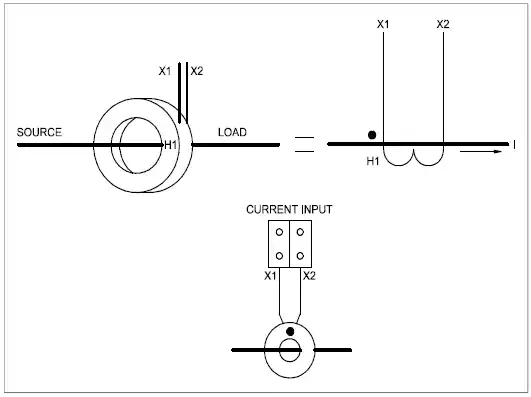Negative Power Readings
Power (watts / kilowatts) is calculated from the measurements of voltage and current. The magnitude of voltage and current directly influence the magnitude of the power readings, but the phase relationship determines its sign. When power and current are directly "in phase", the power reading is positive. When power and current are 180° out of phase, the power reading is negative. Changes in phase relationship also have a bearing on the power factor reading.
It is important to observe the markings on the CTs and the CT wire polarity. The physical orientation of the CT on the conductor, as well as the CT polarity into the meter terminals will determine how power is measured (sign, but not magnitude). The orientation and polarity of the CT, does NOT influence the magnitude or sign of current measurements.
Reversing the physical orientation of the CT on the conductor OR swapping the wire polarity into the meter have the identical effect of reversing the sign of the calculated power.
Most CTs are marked with a dot, or "H1" marking, which indicates the side of the CT which faces the "source". The corresponding output wire is marked as "X1".

The practice of "positive" and "negative" power to reference "import" and "export" power is purely by convention, and most importantly based on the desired measurement result. For example, in most buildings, power from the grid, is considered "import" (positive), and power that is pushed to the grid is "export" (negative). However, in a solar inverter application, the inverter may be considered the source, and it is desirable for its power delivered to be considered positive.
It is imperative that when installing a meter and CTs, that the voltage to current "phasing" be observed. That is: the voltage which is tied to the "Va" input terminal, must match the CT from the same phase installed into the Ia1/Ia2 terminals. Incorrectly "phased" voltage/CT inputs can result in poor power factor readings, as well as varying signs and magnitudes for power measurements.